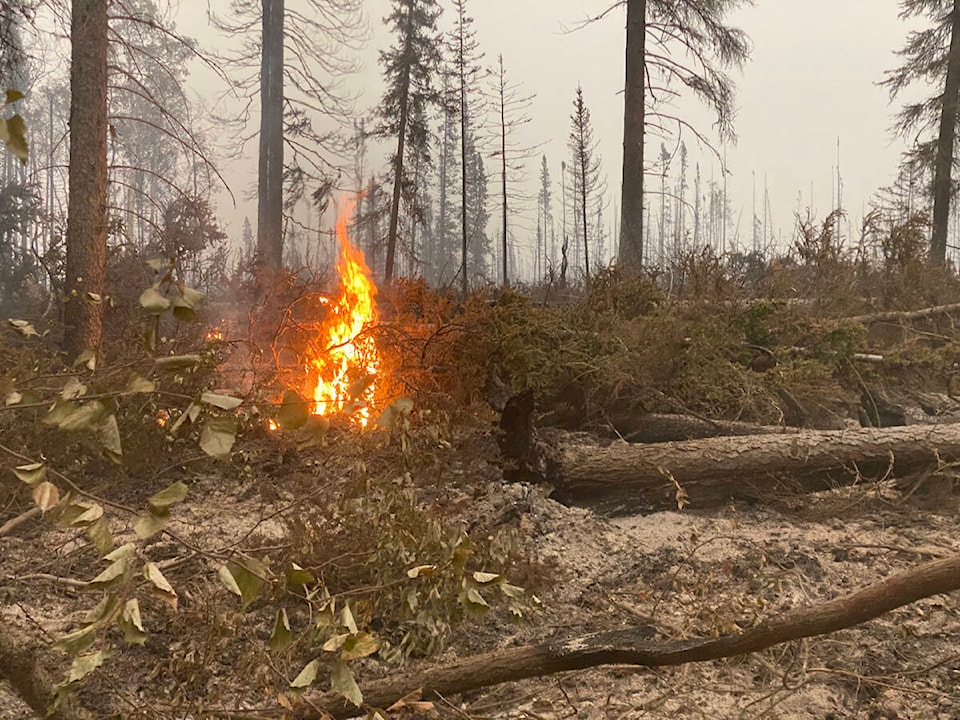Editor’s note: Barry Zellen is a former Yellowknife resident who conducted interviews with author Ed Struzik and James Hrynyshyn, a former NNSL Media editor with the Inuvik Drum, about the past wildfire season.
This is the first of a three-part series on the fires and where things could go from here.

As a former resident of Yellowknife, where I lived in the mid-1990s when I was executive director of the Native Communications Society, I was transfixed 24/7 to the ominous news out of my old hometown this past summer as unprecedented wildfires engulfed the entire region in the worst fire season ever, culminating in the mass evacuation of 22,000 Yellowknifers starting Aug. 16, by military airlift, chartered civilian evacuation flights, and an endless convoy of vehicles down the single roadway to the south.
As an apocalyptic wall of fire and ash took aim at the capital city, a Herculean effort to save the city from the encircling flames through fire suppression efforts was heroically waged.
As NWT fire information officer Jessica Davey-Quantick described in ‘I Evacuated from Yellowknife This Summer. Coming Home Was the Hardest Part’ in the Oct. 5 edition of Maclean’s, “By the end of September 2023, the NWT had recorded 303 fires, burning over four million hectares. That’s about the size of Denmark, and well beyond the record set in 2014, colloquially known as the Summer of Smoke, when 3.4 million hectares burned.”
She noted the season started “hot” in May “when over 4,000 people were forced to evacuate” in “the first of 14 evacuation orders over the course of the summer”; in late July, the territorial government “had imposed the largest fire ban in its history, covering the entirety of the North Slave and South Slave regions;” and by August, there were “over 200 fires burning throughout the territory. Winds gusting up to 60 km/h, unseasonable temperatures in the high 20s and drought conditions combined to send multiple fires hurtling toward communities in the South Slave, devouring everything in their paths in a matter of hours.”
While such pressing danger is now safely past, 91 of those 303 fires continue to burn even as winter approaches, unseasonably late and an ominous harbinger of things to come. As NASA reports, “As of late October 2023, Canada’s remarkable fire season was finally slowing down. Dozens of fires were still out of control on October 24, but winter weather is expected to suppress most of them. However, even winter may not be enough in some cases. Previous research shows that overwintering ‘zombie’ fires in this region have increasingly begun to smolder underground throughout the winter and re-emerge in the spring as temperatures rise.”
Dark days at noon
In an email interview, Canadian author and Arctic environmental expert Ed Struzik, whose recent books include two prescient tomes, Firestorm: How Wildfire Will Shape Our Future and Dark Days at Noon: The Future of Fire, described this year as “the most intense fire season ever” for the NWT, adding, “Two-thirds of the Northwest Territories population was forced to evacuate for several weeks. The threat was territory wide. A research camp I was planning to visit on the coast of the Beaufort Sea was forced to evacuate because the smoke was so thick and unhealthy. It may be hard to believe, but many fires were still burning in mid-October when there is usually snow on the ground.”
While “more than four million hectares of boreal forest burned in the NWT in 2023,” Struzik points out that “fires burned more than 18 million hectares of Russian forest in 2021, setting a record since the country began monitoring forest fires using satellites in 2001. If the Yukon and Alaska had burned big this year, the Russian record might have been surpassed.”
Indeed, while unprecedented for the NWT, Struzik recalls that “the Arctic and sub-Arctic has burned big in the past.” As far back as 2004, “a record number of fires burned in the Yukon and Alaska. One complex of fires consumed over 1.7 million acres – almost the size of Vancouver Island. I remember it well because my wife and I ended up cancelling plans for a wilderness canoe trip down the Wind River in the Yukon. Not only because the Alaska Highway was being closed periodically, but because all the bush planes had been seconded to deal with the fires. There was no way we would have been able to get to the headwaters of that mountain river.”
Then, Struzik adds, “we got a good sense of what was coming three years later when a fire burned more than 1,000 square kilometers of tundra on Alaska’s North Slope. Tundra is almost always too wet and cold to be ignited by lightning or a campfire. Permafrost can be up to 300 feet deep. There is no evidence of a fire as big as this burning the tundra in the last 10,000 years.”
Coming to a boil
And since then, things have only continued to intensify: “Alaska burned big again in 2015. It began with a slow moving thunderstorm that shot out 62,000 lighting strikes in five days, triggering 286 fires. On June 20, there were 8,000 strikes in Alaska and several hundred more in the Yukon. No one had ever seen anything like it. Ironically, one fire overran part of the Alyeska pipeline.”
Then, just last summer Struzik was “visiting a climate change research station in the Dehcho region of the Northwest Territories. In an historic move, Laurier University handed ownership over to the Indigenous community. In late October, when there is almost always snow on the ground, a wildfire burned through it.”
According to Struzik, “The rising number of fires in the Arctic and sub-Arctic is pure and simple, a symptom of a warming world. Very few fires are ignited by humans as they are in the south. Several things contribute to the severity. One-degree increase in temperature equals 12 per cent more lightning. More heat means more tundra and wetlands drying out and being primed for ignition. Wetlands are also important because they can slow or stop a fire.”
So what can we do to fight this gathering threat to the Arctic? Struzik believes that “communities in the North can do a lot to mitigate the threat of wildfire. They can thin the forests around town and create fire breaks that reduce the chance of fires moving into populated areas. Controlled burning is also a way of reducing the amount of fuel on the ground. Better building codes are also necessary. The traditional log cabin will not fare well in a fire. That said, most communities do not have the necessary resources to do this. They need help.”
He recalls how “Indigenous people in the south used controlled burning as a way of levelling brush so that grass would grow and attract bison and other animals. They also did it to nurture the growth of root vegetables and berries. This was very good land management until we made them stop doing it.”
Perhaps it’s time to dust off these age-old practices and embrace the wisdom of traditional Indigenous knowledge.
